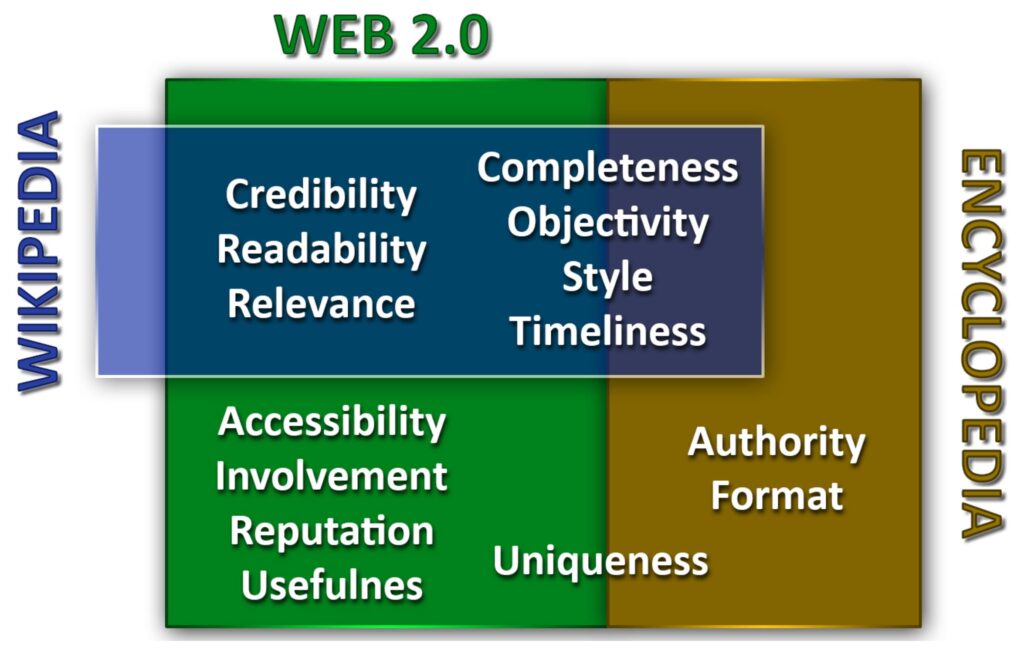Diverse approaches to defining information by researchers lead also to inconsistencies in defining the notion of its quality. According to the most popular definition, the quality of information can be defined as fitness for use.
In order to define the quality dimensions in Wikipedia, one should take into account the similarity of this website with traditional encyclopedias and web 2.0 services. On the one hand, content in Wikipedia is created to be a reference point, in an encyclopedic style. According to various studies it has comparable accuracy to other traditional encyclopedias. The quality of an article in a traditional encyclopedia can be defined by 7 dimensions: authority, completeness, format, objectivity, style, timeliness, uniqueness. On the other hand, Wikipedia is built in a way to allow collaboration between users. It is therefore based on web 2.0 technologies, which have the following quality dimensions: accessibility, completeness, credibility, involvement, objectivity, readability, relevance, reputation, style, timeliness, uniqueness, usefulness.

Considering the quality criteria adopted by the Wikipedia community and previously described characteristics of traditional encyclopedia and web 2.0 documents, we can choose the following quality dimensions for the Wikipedia articles: completeness, credibility, objectivity, readability, relevance, style, timeliness. Figure shows coverage between quality dimensions of the web 2.0, traditional encyclopedia and Wikipedia.
See also
Bibliography
- Lewoniewski W, Węcel K., Abramowicz W. (2019) Multilingual Ranking of Wikipedia Articles with Quality and Popularity Assessment in Different Topics. Computers. 2019, 8(3):60. DOI: 10.3390/computers8030060
